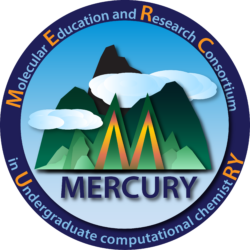|
Andras Fiser
Albert Einstein College of Medicine
Department of Biochemistry and Center for Bioinformatics
General reading:
Fiser A
Protein structure modeling in the proteomics era
Expert Rev Proteomics. (2004) Jun;1(1):97-110
Fiser, A., Feig, M., Brooks C.L. and Sali, A.
Evolution and phyics in comparative protein structure modeling
Acc. Chem. Res. (2002) 35, 413-421
Specific reading:
Rai BK, Fiser A.
Multiple mapping method: a novel approach to the sequence-to-structure alignment problem in comparative protein structure modeling
Proteins. 2006 May 15;63(3):644-61
Fernandez-Fuentes N, Oliva B, Fiser A.
A supersecondary structure library and search algorithm for modeling loops in protein structures.
Nucleic Acids Res. 2006 Apr 14;34(7):2085-97.
A. Fiser, R. K. G. Do and A. Sali.
Modeling of loops in protein structures
Prot. Sci. (2000) 9, 1753-1773
Heather L. Gordon
Associate Professor, Department of Chemistry
Director, Centre for Biotechnology
Brock University
St. Catharines, ON, Canada
Yvonne C. Martin
Senior Volwiler Research Fellow
Advanced Technology
Global Pharmaceutical Discovery
Abbott Laboratories
Abbott Park, IL
Possible reading:
(1) Boyd, D. B. Is Rational Design Good for Anything? Rational Drug Design: Novel Methodology and Practical Applications; American Chemical Society: Washington, DC, 1999; pp 346-356.
(2) Kubinyi, H. Drug research: myths, hype and reality. Nat. Rev. Drug Discovery 2003, 2, 665-668.
Lack of success with early combinatorial chemistry and high-throughput screening approaches resulted from inappropriate compound selection. We are now aware that screening compounds should be either ‘lead-like’ or ‘drug-like’ and have the potential to be orally available. However, there is a growing tendency to misuse such terms and to overestimate their importance, and to overemphasize ADME problems in clinical failure. Sometimes, this goes hand-in-hand with an uncritical application of high- throughput in silico, methods. Structure-based and computer-aided approaches can only be as good as the medicinal chemistry they are based on. The search for new drugs, especially in lead optimization, is an evolutionary process that is only likely to be successful if new methods merge with classical medicinal chemistry knowledge.
(3) Kubinyi, H. Chance favors the prepared mind – From serendipity to rational drug design. J. Recept. Signal Transduction 1999, 19, 15-39.
Accidental discoveries always played an important role in science, especially in the search for new drugs. Several examples of serendipitous findings, leading to therapeutically useful drugs, are presented and discussed. Captopril, an antihypertensive Angiotensin-converting enzyme inhibitor, was the first drug that could be derived from a structural model of a protein. Dorzolamide, a Carboanhydrase inhibitor for the treatment of glaucoma, and the HIV protease inhibitors Saquinavir, Indinavir, Ritonavir, and Nelfinavir are further examples of therapeutically used drugs from structure-based design. More enzyme inhibitors, e.g. the anti-influenza drugs Zanamivir and GS 4104, are in clinical development. In the absence of a protein 3D structure, the 3D structures of certain ligands may be used for rational design. This approach is exemplified by the design of specifically acting integrin receptor antagonists. In the last years, combinatorial and com! putational approaches became important methods for rational drug design. SAR by NMR searches for low-affinity ligands that bind to proximal subsites of an enzyme; linkage with an appropriate tether produces nanomolar inhibitors. The de novo design program LUDI and the docking program FlexX are tools for the computer-aided design of protein ligands. Work is in progress to combine such approaches to strategies for combinatorial drug design. [References: 66]
(4) J. G. Lombardino & John A. Lowe, A guide to drug discovery: The role of the medicinal chemist in Durg discovery–then and now. Nat. Rev. Drug Discovery 2004 3:853-862
The role of the medicinal chemist in drug discovery has undergone major changes in the past 25 years, mainly because of the introduction of technologies such as combinatorial chemistry and structure-based drug design. As medicinal chemists with more than 50 years of combined experience spanning the past four decades, we discuss this changing role using examples from our own and others’ experience. This historical perspective could provide insights in to how to improve the current model for drug discovery by helping the medicinal chemist regain the creative role that contributed to past successes.
Hugh Nymeyer, Ph. D.
Assistant Professor
Department of Chemistry and Biochemistry
Florida State University
Tallahassee, FL
Dagmar Ringe, Ph.D.
Professor of Biochemistry, Chemistry, &
Rosenstiel Basic Medical Sciences Research Center
Protein Crystallography
Brandeis University
Waltham, MA
Jeff G. Saven
Associate Professor, Department of Chemistry
University of Pennsylvania,
Philadelphia, PA |


